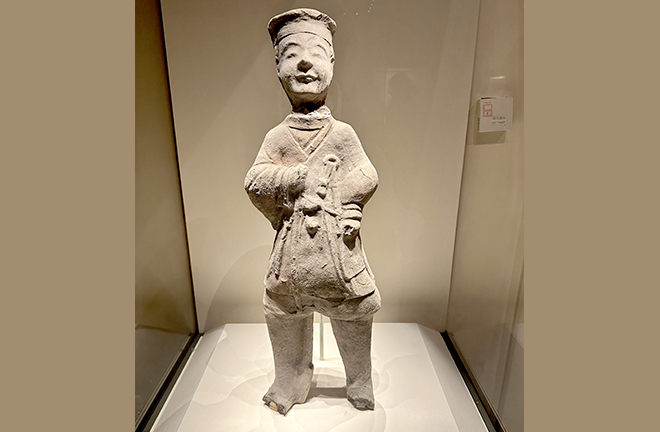Han Dynasty

An Eastern Han pottery soldier Photo: Ren Guanhong/CSST
Within four years after the death of Qin Shi Huang, the founder of the Qin Dynasty, the country collapsed in uprisings. Two former rebel leaders, Xiang Yu and Liu Bang, engaged in a grand war to decide who would become the next ruler of China. In 202 BCE, Liu Bang emerged victorious over his rival, proclaiming himself emperor, establishing the Han Dynasty (206 BCE–220 CE) with its capital in Chang’an.
Under the Huang-Lao Taoism philosophy that proposed to reduce government intervention in economic and social production, the Han witnessed the prosperous reigns of Emperor Wen (r. 180–157 BCE) and his son Emperor Jing (r. 157–141 BCE). After ascending to the throne, Emperor Wu (r. 141–87 BCE) established a strong centralized state via governmental policies, economical reorganization, and the imposition of a hybrid Legalist–Confucian doctrine. Additionally, he successfully repelled the nomadic Xiongnu and dispatched his envoy Zhang Qian into the Western Regions, greatly increasing contact with western Eurasia. In 60 BCE, the Han established the Protectorate of the Western Regions and officially incorporated the Western Regions into its territory.
After Emperor Ping died, an official Wang Mang (r. 9–23) seized the throne and founded his own dynasty in 9 CE. His short-lived rule marked the separation between the Western Han (206 BCE–8 CE) and Eastern Han (25–220). Wang’s rule collapsed amidst large-scale peasant uprisings. In 25 CE, the authority of the Han Dynasty was reaffirmed by Liu Xiu, the first emperor of the Eastern Han. The Eastern Han court dispatched Ban Chao (32–102) to take charge of the Western Regions, where he successfully re-established Han’s control over the Tarim Basin region. This period marked the peak of the Eastern Han.
By the end of the 2nd century, the Eastern Han Empire was disintegrating into chaos. Its last emperor had become a mere puppet, and finally ceded the throne to Cao Pi, the son of Cao Cao in 220 CE. The rule of a single empire thus was replaced by that of three separate kingdoms, and the Han Empire fell.
Edited by REN GUANHONG

 PRINT
PRINT CLOSE
CLOSE